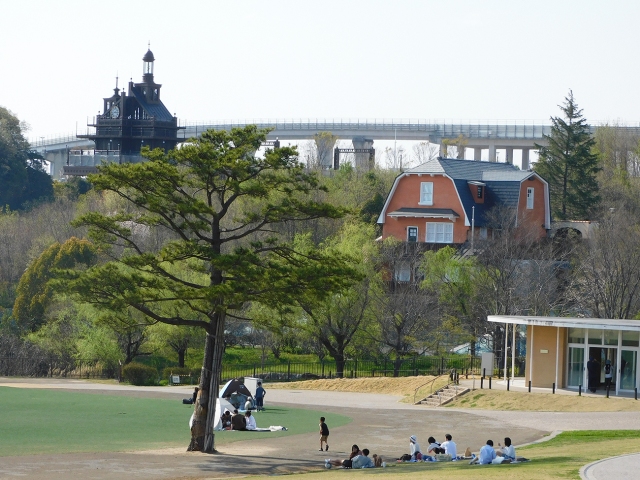
Pulling the curtain back on what awaits you when you step into the magical anime world of Ghibli.
With the Ghibli Park scheduled to open on 1 November this year, the countdown is now truly on, both for the team charged with construction — headed up by Ghibli director Hayao Miyazaki’s son Goro — and fans of the studio, who’ve been eagerly waiting for the opening since it was first announced in 2017.
With less than six months to go until the doors to the theme park open to the public, we decided to take a trip to the site to see what it currently looks like. As the upcoming attraction consists of different areas built within the preexisting Ai・Chikyuhaku Kinen Koen (“Aichi Earth Expo Memorial Park”), it’s possible for visitors to stroll around the grounds of the memorial park while the sections are being built, so that’s what we did, hopping on the Linimo magnetic levitation train to Ai・Chikyuhaku Kinen Koen Station.
The number 5 exit at the station leads directly to the memorial park, making it a super convenient way to visit. As the window decals show, the park already had a Ghibli look to it before the studio decided to build its theme park there, thanks to mascots Morizo and Kikkoro, who can be seen at the bottom right of the sliding door in the photo below. Collectively known as “Morikoro“, these two forest spirits were the official mascots for Expo 2005, the world expo held at the park that year.
▼ The Aichi Earth Expo Memorial Park is also known as “Morikoro Park”, in honour of these mascots.
Once you exit the station, you’ll step out onto a promenade that leads towards the north gate of the park.
▼ The north gate is currently surrounded by construction work.
As the memorial park itself is still open, with only the Ghibli Park areas off-limits to the public, sites like the white domed gymnasium we walked past were still operating as usual.
There are some new sites popping up on the landscape as part of the new Ghibli Park construction, however, and one of those is the much talked about elevator tower.
This elevator acts as a gateway to Ghibli Park’s Hill of Youth section, and the design is said to be modelled on “the fantasy scientific world of the late 19th century”, which inspired the studio’s first official anime, Laputa: Castle in the Sky.
The elevator’s fantasy design is the perfect way to transport visitors to the magical world of Ghibli, and it stands out as a focal point of the park, much like Cinderella Castle at Disneyland.
A closer look at the design reveals some beautiful touches that make this feature look part-lighthouse, part-ship, part-observatory, and the best part about it is, it’s currently in operation so visitors can use it right now.
Taking the elevator down to the lower level makes it feel as if you’re time-travelling to another world, although right now, once you get to the bottom, you’re met with more construction.
Once the park opens, though, this’ll be a beautiful way to enter the Hill of Youth area, which will be home to recreated locations from Whisper of the Heart and The Cat Returns.
▼ The worlds of Whisper of the Heart and The Cat Returns are currently off limits to the public.
While the paths to these areas can’t be accessed just yet, there is a way to see the Earth Shop from Whisper of the Heart. Simply head over to the “Large Lawn Park” on the other side of the pond…
..and from here, you can get a tantalising glimpse of the shop that’s due to open in November.
▼ Using the zoom lens on our camera gives us a better look at some of the details.
▼ As you can see, the Earth Shop is almost complete!
▼ This building was previously concealed from view with scaffolding until recently.
Unlike the elevator tower, which hasn’t been modelled on an actual in-anime landmark, this building looks just like the Earth Shop seen in the film, complete with the same architectural design and colour scheme.
▼ Like an anime scene come to life!
Walking a little further through the park takes you to Ghibli’s Giant Warehouse, located in the southwest section.
This area was tightly guarded, with the inside of the warehouse sealed off completely from view. Incidentally, this site was once home to the park’s heated pool, so it’s big enough to house some extra-large models, like the Catbus and a 6.3-meter (20.7-foot) long scale replica of an airship from Laputa: Castle in the Sky.
We visited in early April, but taking a peek at the information posted here indicates that construction at this particular site was scheduled to be complete by 28 April. Given that this is a large indoor space, however, it’s likely that the interior will remain a closely guarded secret until the opening.
Heading east, we made our way to Witch’s Valley, an area that will bring to life two famous Ghibli films — Howl’s Moving Castle and Kiki’s Delivery Service.
This is where you’ll be able to see — and enter — a real-life version of Howl’s castle, but when we visited, that 16-metre (52.5 feet) tall spectacle was nowhere to be seen.
▼ This is all that’s on view at Witch’s Valley at the moment.
Unlike the majority of Ghibli Park areas, which are scheduled to open this year, Witch’s Valley won’t open until next year, along with one other section — Mononoke Village.
These two areas look set to be Ghibli Park’s most ambitious projects, with Witch’s Valley stretching across the largest area — 2.9 hectares (7.9 acres) — and set to include the Hatter’s Hat Shop from Howl’s Moving Castle, as well as Kiki’s childhood house, the Guchokipanya bakery, and the Witch’s Home from Kiki’s Delivery Service, in addition to Howl’s castle.
Mononoke Village is substantially smaller, at 0.8 hectares (1.98 acres), but it aims to showcase grand locations from Emishi Village and Irontown from Princess Mononoke, including a village settlement, a traditional charcoal burner’s hut, and an education centre where visitors can work iron forge bellows.
▼ With this area’s opening over a year away, there’s not a lot to see here at the moment.
The amount of construction going on shows the grand scale of these projects, but one thing that surprised us was the grand scale of the park in which Ghibli Park is being built.
Looking at the map makes it appear as if the park isn’t that big, but it’s actually a lot bigger in real-life, so it takes quite a while to walk from one Ghibli Park area to the next. The map below shows the different areas circled in red, starting at the top right with Mononoke Village, and going around in a clockwise manner we have Witch’s Valley, Dondoko Forest, Ghibli’s Grand Warehouse, and Hill of Youth.
As you can see from the map, Dondoko Forest is further away compared to the other areas, so we left this as the last stop on our visit. The walk to get there is a pleasant one, as it follows a meandering path by the waterside.
The star attraction at Dondoko Forest is a full-scale replica of Mei and Satsuki’s house from My Neighbour Totoro, and the route to the area is perfectly aligned with the setting of the film, making you feel as if Totoro or the Catbus might pop out from behind the trees at any moment.
As Dondoko Forest is currently under construction, the path to Mei and Satsuki’s house is cut off to the public, but that’s okay — a short detour take you to this elevated lookout, where you can see the house in all its glory.
▼ There it is!
Mei and Satsuki’s house was originally built at the park as a pavilion during the 2005 Aichi Expo, and it’s been drawing visitors to the site ever since.
Though Mei and Satsuki’s house was previously open to the public, it closed in November last year for renovations, with its re-opening scheduled to coincide with this year’s 1 November opening of Ghibli Park.
Judging by the looks of things, the house has received a fresh coat of paint, and that’s not all…
…the one-storey building beside it, which was previously unpainted, has now been painted to match Satsuki and Mei’s house, and it’s been given a new roof as well.
One thing that hasn’t changed is the bus stop, as its worn, weathered look helps to retain its anime-like charm.
A trip to Satsuki and Mei’s house is a great way to end a visit to Ghibli Park, and a short walk from here will take you to the “rest area” at the park’s West Entrance. This is where you’ll be able to take a photo with Totoro, as he sits on a tree stump under a lamp beside his beloved bus stop.
▼ Beside Totoro is a miniature model of Mei and Satsuki’s house.
So there you have it — a first look at Ghibli Park and what you can expect to see when you visit. One of our favourite sights of the day was the Earth Shop, which we’re hoping will sell exclusive merchandise, but each and every area looks like it’ll have something special to enchant visitors.
With tickets priced from 1,000 yen (US$7.69) for adults and 500 yen for children entering a single area, and all-inclusive tickets to Dondoko Forest, Ghibli’s Grand Warehouse, and Hill of Youth priced from 4,000 yen for adults and 2,000 yen for children, Ghibli Park promises to be a great day out for visitors of all ages.
We’re now eagerly counting down the days until the park opens, and meanwhile, we’ll be taking another look at what’s behind those construction site walls, and dreaming of walking through the Spirited Away tunnel that’s been promised to visitors!
Photos ©SoraNews24
● Want to hear about SoraNews24’s latest articles as soon as they’re published? Follow us on Facebook and Twitter!
[ Read in Japanese ]






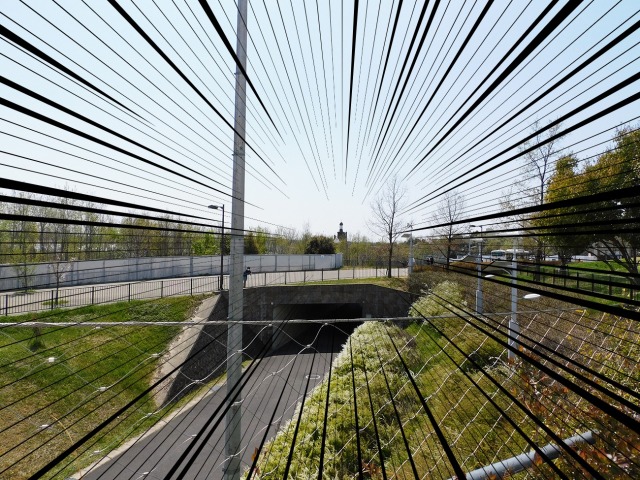



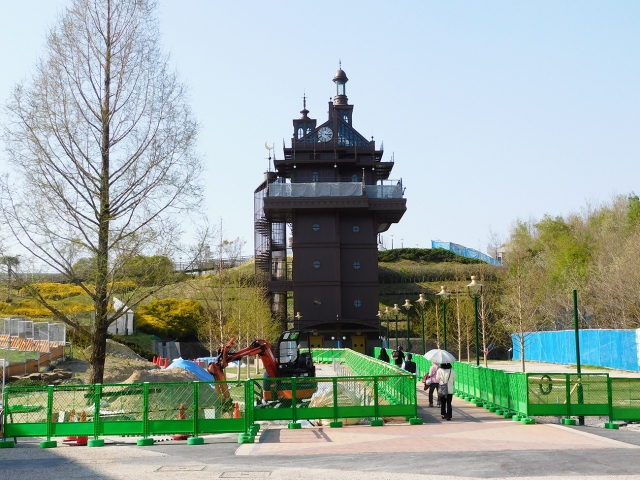






























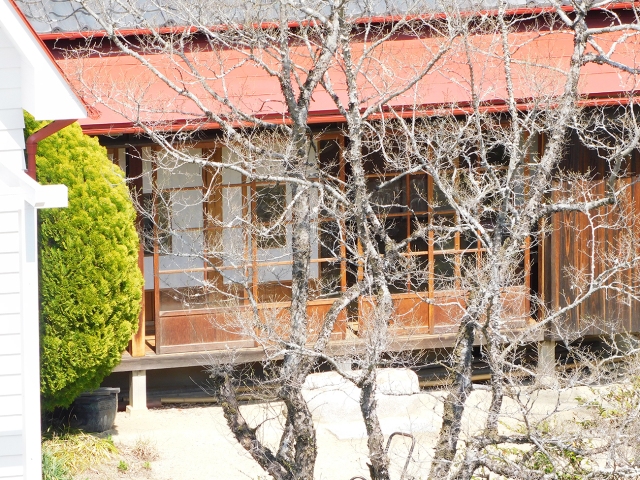





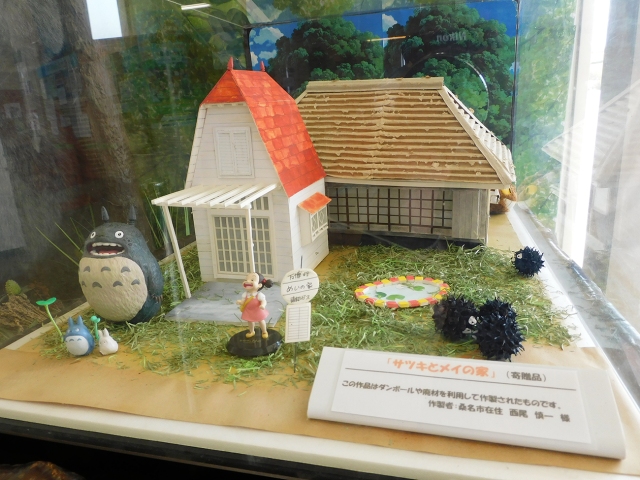



 Ghibli theme park will have Totoro playroom, Kiki’s house, and let you work Irontown’s bellows
Ghibli theme park will have Totoro playroom, Kiki’s house, and let you work Irontown’s bellows Studio Ghibli theme park announces ticket prices and reservation policy
Studio Ghibli theme park announces ticket prices and reservation policy Ghibli Park raises ticket prices, announces Howl area opening date, carousel with ridable Yakul
Ghibli Park raises ticket prices, announces Howl area opening date, carousel with ridable Yakul Ghibli Park: Opening date, first photos, and a new promo video produced by Studio Ghibli!
Ghibli Park: Opening date, first photos, and a new promo video produced by Studio Ghibli! Ghibli Park unveils new real-life Howl’s Moving Castle!
Ghibli Park unveils new real-life Howl’s Moving Castle! Foreigner’s request for help in Tokyo makes us sad for the state of society
Foreigner’s request for help in Tokyo makes us sad for the state of society Japanese city loses residents’ personal data, which was on paper being transported on a windy day
Japanese city loses residents’ personal data, which was on paper being transported on a windy day Should you add tartar sauce to Japanese curry rice? CoCo Ichi makes diners an unusual offer
Should you add tartar sauce to Japanese curry rice? CoCo Ichi makes diners an unusual offer Seaside scenery, history, and so many desserts on Yokohama’s Akai Kutsu【Japan Loop Buses】
Seaside scenery, history, and so many desserts on Yokohama’s Akai Kutsu【Japan Loop Buses】 Ghibli Park now selling “Grilled Frogs” from food cart in Valley of Witches
Ghibli Park now selling “Grilled Frogs” from food cart in Valley of Witches French Fries Bread in Tokyo’s Shibuya becomes a hit on social media
French Fries Bread in Tokyo’s Shibuya becomes a hit on social media Mt. Koya planning to instate visitor’s tax to cope with huge tourist numbers
Mt. Koya planning to instate visitor’s tax to cope with huge tourist numbers Harajuku Station’s beautiful old wooden building is set to return, with a new complex around it
Harajuku Station’s beautiful old wooden building is set to return, with a new complex around it Suntory x Super Mario collaboration creates a clever way to transform into Mario【Videos】
Suntory x Super Mario collaboration creates a clever way to transform into Mario【Videos】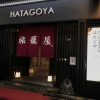 Tokyo capsule hotel’s low month-long rates are an awesome way to sample life in Japan’s capital
Tokyo capsule hotel’s low month-long rates are an awesome way to sample life in Japan’s capital McDonald’s new Happy Meals offer up cute and practical Sanrio lifestyle goods
McDonald’s new Happy Meals offer up cute and practical Sanrio lifestyle goods Japanese ramen restaurants under pressure from new yen banknotes
Japanese ramen restaurants under pressure from new yen banknotes Studio Ghibli releases new action figures featuring Nausicaä of the Valley of the Wind characters
Studio Ghibli releases new action figures featuring Nausicaä of the Valley of the Wind characters New private rooms on Tokaido Shinkansen change the way we travel from Tokyo to Kyoto
New private rooms on Tokaido Shinkansen change the way we travel from Tokyo to Kyoto Red light district sushi restaurant in Tokyo shows us just how wrong we were about it
Red light district sushi restaurant in Tokyo shows us just how wrong we were about it Tokyo Tsukiji fish market site to be redeveloped with 50,000-seat stadium, hotel, shopping center
Tokyo Tsukiji fish market site to be redeveloped with 50,000-seat stadium, hotel, shopping center All-you-can-drink Starbucks and amazing views part of Tokyo’s new 170 meter-high sky lounge
All-you-can-drink Starbucks and amazing views part of Tokyo’s new 170 meter-high sky lounge Beautiful Ghibli sealing wax kits let you create accessories and elegant letter decorations【Pics】
Beautiful Ghibli sealing wax kits let you create accessories and elegant letter decorations【Pics】 Studio Ghibli releases Kiki’s Delivery Service chocolate cake pouches in Japan
Studio Ghibli releases Kiki’s Delivery Service chocolate cake pouches in Japan New definition of “Japanese whiskey” goes into effect to prevent fakes from fooling overseas buyers
New definition of “Japanese whiskey” goes into effect to prevent fakes from fooling overseas buyers Our Japanese reporter visits Costco in the U.S., finds super American and very Japanese things
Our Japanese reporter visits Costco in the U.S., finds super American and very Japanese things Studio Ghibli unveils Mother’s Day gift set that captures the love in My Neighbour Totoro
Studio Ghibli unveils Mother’s Day gift set that captures the love in My Neighbour Totoro More foreign tourists than ever before in history visited Japan last month
More foreign tourists than ever before in history visited Japan last month New Pokémon cakes let you eat your way through Pikachu and all the Eevee evolutions
New Pokémon cakes let you eat your way through Pikachu and all the Eevee evolutions Sales of Japan’s most convenient train ticket/shopping payment cards suspended indefinitely
Sales of Japan’s most convenient train ticket/shopping payment cards suspended indefinitely Sold-out Studio Ghibli desktop humidifiers are back so Totoro can help you through the dry season
Sold-out Studio Ghibli desktop humidifiers are back so Totoro can help you through the dry season Japanese government to make first change to romanization spelling rules since the 1950s
Japanese government to make first change to romanization spelling rules since the 1950s Ghibli founders Toshio Suzuki and Hayao Miyazaki contribute to Japanese whisky Totoro label design
Ghibli founders Toshio Suzuki and Hayao Miyazaki contribute to Japanese whisky Totoro label design Doraemon found buried at sea as scene from 1993 anime becomes real life【Photos】
Doraemon found buried at sea as scene from 1993 anime becomes real life【Photos】 Tokyo’s most famous Starbucks is closed
Tokyo’s most famous Starbucks is closed One Piece characters’ nationalities revealed, but fans have mixed opinions
One Piece characters’ nationalities revealed, but fans have mixed opinions We asked a Uniqlo employee what four things we should buy and their suggestions didn’t disappoint
We asked a Uniqlo employee what four things we should buy and their suggestions didn’t disappoint Princesses, fruits, and blacksmiths: Study reveals the 30 most unusual family names in Japan
Princesses, fruits, and blacksmiths: Study reveals the 30 most unusual family names in Japan Ghibli Park releases new info, preview images for Howl’s Moving Castle, Princess Mononoke areas
Ghibli Park releases new info, preview images for Howl’s Moving Castle, Princess Mononoke areas Ghibli theme park will recreate Howl’s castle, Princess Mononoke’s Irontown, and Kiki’s house
Ghibli theme park will recreate Howl’s castle, Princess Mononoke’s Irontown, and Kiki’s house Studio Ghibli theme park designs unveiled, five special zones bring anime movie worlds to life
Studio Ghibli theme park designs unveiled, five special zones bring anime movie worlds to life Ghibli Park abolishes ticket lottery system, creates new multi-zone pass
Ghibli Park abolishes ticket lottery system, creates new multi-zone pass Ghibli Park announces opening dates for new areas
Ghibli Park announces opening dates for new areas Ghibli theme park wants tickets to be half price of Tokyo Disneyland and Universal Studios Japan
Ghibli theme park wants tickets to be half price of Tokyo Disneyland and Universal Studios Japan Hayao Miyazaki produces animated commercial for Ghibli Park【Video】
Hayao Miyazaki produces animated commercial for Ghibli Park【Video】 Studio Ghibli theme park: New details include official park logo drawn by director Hayao Miyazaki
Studio Ghibli theme park: New details include official park logo drawn by director Hayao Miyazaki Ghibli Park’s new Princess Mononoke area reveals real-world mythical beasts, Irontown【Videos】
Ghibli Park’s new Princess Mononoke area reveals real-world mythical beasts, Irontown【Videos】 Non-Whisper of the Heart Seiji’s 60x-zoom sneak peek of the real-world Earth Shop at Ghibli Park
Non-Whisper of the Heart Seiji’s 60x-zoom sneak peek of the real-world Earth Shop at Ghibli Park Studio Ghibli theme park launches official website
Studio Ghibli theme park launches official website Ghibli Park now has English international ticket reservation site
Ghibli Park now has English international ticket reservation site Studio Ghibli theme park’s opening will not be delayed by coronavirus, planners promise
Studio Ghibli theme park’s opening will not be delayed by coronavirus, planners promise Ghibi theme park recruiting full and part-time staff for new expansions, no experience necessary
Ghibi theme park recruiting full and part-time staff for new expansions, no experience necessary Free Ghibli Park preview day ticket applications are now open!
Free Ghibli Park preview day ticket applications are now open! Ghibli Park reveals photo of Elevator Tower entrance, says fans can start using it right now
Ghibli Park reveals photo of Elevator Tower entrance, says fans can start using it right now
Leave a Reply